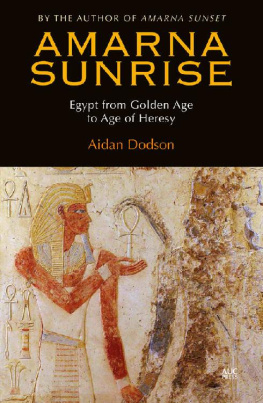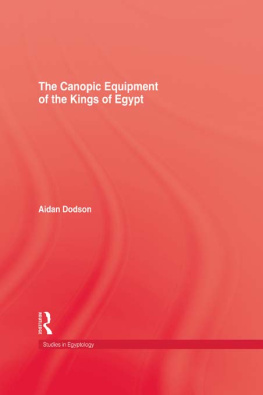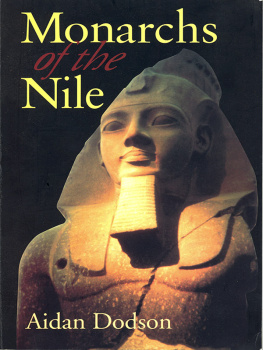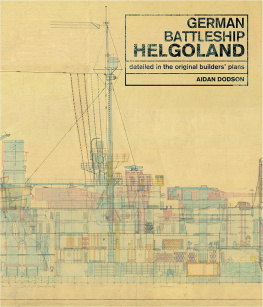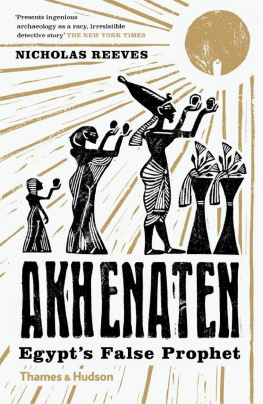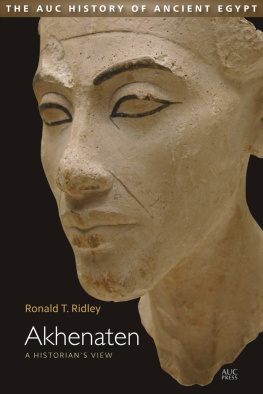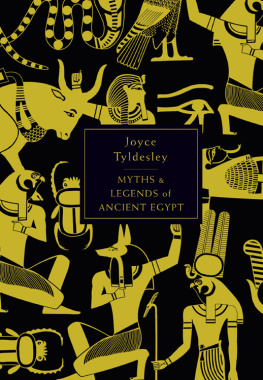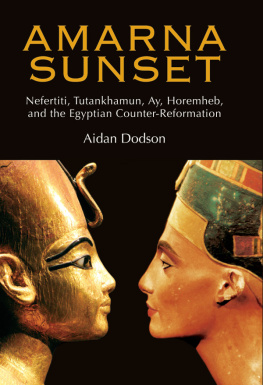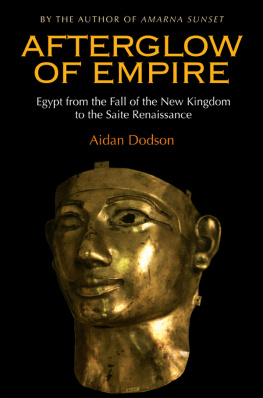AMARNA
SUNRISE
Portada
AMARNA
SUNRISE
Egypt from Golden Age
to Age of Heresy
Aidan Dodson
The American University in Cairo Press Cairo New York
Credits
First published in 2014 by
The American University in Cairo Press
113 Sharia Kasr el Aini, Cairo, Egypt
420 Fifth Avenue, New York, NY 10018
www.aucpress.com
Copyright 2014 by Aidan Dodson
All rights reserved. No part of this publication may be reproduced, stored in a retrieval system, or transmitted in any form or by any means, electronic, mechanical, photocopying, recording, or otherwise, without the prior written permission of the publisher.
Exclusive distribution outside Egypt and North America by I.B.Tauris & Co Ltd., 6 Salem Road, London, W2 4BU
Dar el Kutub No. 14514/13
ISBN 978 977 416 633 4
Dar el Kutub Cataloging-in-Publication Data
Dodson, Aidan
Amarna Sunrise: Egypt from Golden Age to Age of Heresy/Aidan Dodson.Cairo: The American University in Cairo Press, 2014
p. cm.
ISBN: 978 977 416 633 4
1. Egypt Antiquities
1 2 3 4 5 18 17 16 15 14
Designed by Adam el-Sehemy
Printed in Egypt
To
To the memory of Cyril Aldred (191499) whose writings first introduced me to Akhenaten
Contents
CONTENTS
Preface
T his book in many ways serves as a prequel to my earlier volume, Amarna Sunset, published in 2009, which traced the history of the Eighteenth Dynasty from the high point of the reign of Akhenaten in the fourteenth century bc down to the accession of the first of the Rameside kings, nearly half a century later. The reign of Akhenaten and his heretical religious reforms has for the past century been one of the most written-about topics in Egyptian history, the province not only of the archaeologist, the historian, and the theologian, but also the novelist, the dramatist, the filmmaker, the philosopher, and the crank (not to mention combinations of at least some of these categories!). Indeed, Akhenatens building of a brand-new capital city, Akhet-Atenmodern Tell el-Amarna, which has given its name to the kings erahas also made him the object of studies in town planning as well.
One of the key elements that has drawn many of these individualstogether with a significant swathe of the Egyptophile populationto the man and his era has been the fact that his religious reforms focused on the cult of a sole godthe first such deity securely attested in human history. As such, Akhenaten has been seized by a number of modern monotheists as their own spiritual ancestor, with aspects of some present-day faiths reflected back onto assessments of the king and his Aten cult. Linked to this, on the basis of the view in many Christian and Muslim societies that monotheism is by definition good and polytheism is by definition bad, the king and his god have often been given particularly positive assessments. Most notably, the early-twentieth-century Egyptologist James Henry Breasted lamented of Akhenaten that there died with him such a spirit as the world had never seen before the worlds first individual. Such views have passed into wider culture as facts, and still strongly color pictures of Akhenaten, his family and times painted by those outside the academic Egyptological community. Indeed, negative assessments of Akhenaten by some modern Egyptologists have roused some enthusiasts to fury for libeling the Father of Monotheism! Such less positive views have in some cases been harnessed as alternate models for Akhenatens reforms in totalitarian political creeds such as Marxism-Leninism and fascism, which in many ways mimic monotheism in their insistence on a single truth to which all other things must be subordinated.
Ultimately, however, the application of such models, reflecting religious approaches that date from only the past two millennia, and political ones that are but a century old, to data that is not only three-and-a-half millennia old, but that is also woefully incomplete, can be argued to be fundamentally flawedexcept, perhaps, when using them simply as aids in considering how human beings may operate when confronted by rigid religio-political doctrine. Rather, Akhenaten and his times must be seen in the context of second-millennium-BC Egypt and the wider Near Eastcrucially as seen through the prism of the surviving evidence. The latter point is a key one: given the paucity of data, many assumptions have to be made to produce any kind of narrative, and any single item of new data can show a long-held and potentially crucial assumption to be wholly in error. For example, depictions of Akhenaten in positions of affection with a co-ruler have been the basis for confident statements as to Akhenatens homo- or bisexuality that have passed into popular fact. However, the proof that one of his co-rulers was not only a woman but probably also his wife removes any basis for this factalthough, given the difficulty of unpicking popular facts, it may be decades (at best!) before this aspect of Akhenaten disappears from the secondary and tertiary literature.
Another example of the limitations of evidence is the existence of the Amarna Letters, an archive of diplomatic correspondence found at Akhenatens capital. These documents shed a considerable amount of light on international relationships of the timebut suffer from two issues. One is whether this is an entire archive, or merely a portionand, if so, what kind of portion? The other is that it is the only archive of its type ever found in Egypt. Thus, we have issues of whether we are seeing a whole picture, or only a partial one, together with no means of telling how typical or atypical the kinds of events described or alluded to actually are. Also lacking in many cases are clear indications of the date or even the relative sequence of letters. Accordingly, it is impossible to make any definitive assessment of the totality of Akhenatens foreign policy or whether it followed or deviated from the approaches pursued by his immediate predecessors and successors. In spite of this, the letters have been used, in conjunction with assumptions derived from the aforementioned religious models, to confidently describeapprovingly or disapprovingly, depending on the authora pacifist foreign policy directly derived from the kings religious philosophy.
Accordingly, the present book is intended to place the reign of Akhenaten in its Egyptian religious and political context through a study of the countrys history from the latter years of Amenhotep II, which concluded the first era of imperial expansion, initiated by Thutmose I, through to the twelfth year of Akhenatens reign, in which the apparent triumph of the new order was marked by a great festival at which gifts from the known world were presented to the king. In doing so, the aim is to tease out the key themes from earlier reigns that contributed to Akhenatens revolution, and thus how far the Amarna Period represented something wholly new, and how far it represented evolution of pre-existing elements. It also aims to provide an up-to-date summary of views and discoveries relating to the period, including controversial DNA studies that seemed initially to solve a number of genealogical issues but which are now under attack, not only from Egyptologists, but from geneticists as well. In doing so, the intent is to ensure that all key material is referenced and that where the conclusions reached differ substantively from those of other scholars, a clear indication is given. For this reason, the questions raised by the DNA work have been addressed in detail in appendix 4, which also provides what seems at present to be the most likely genealogy of the royal family.
Much of this book was written while I held the William K. and Marilyn M. Simpson Chair of Egyptology at the American University in Cairo for the spring semester 2013; I am accordingly most grateful to the university for this honor and for its fine library facilities. I am also most appreciative of having been housed, in Zamalek, within a hundred meters of the excellent library of the German Archaeological Institute in Cairo!
Next page
